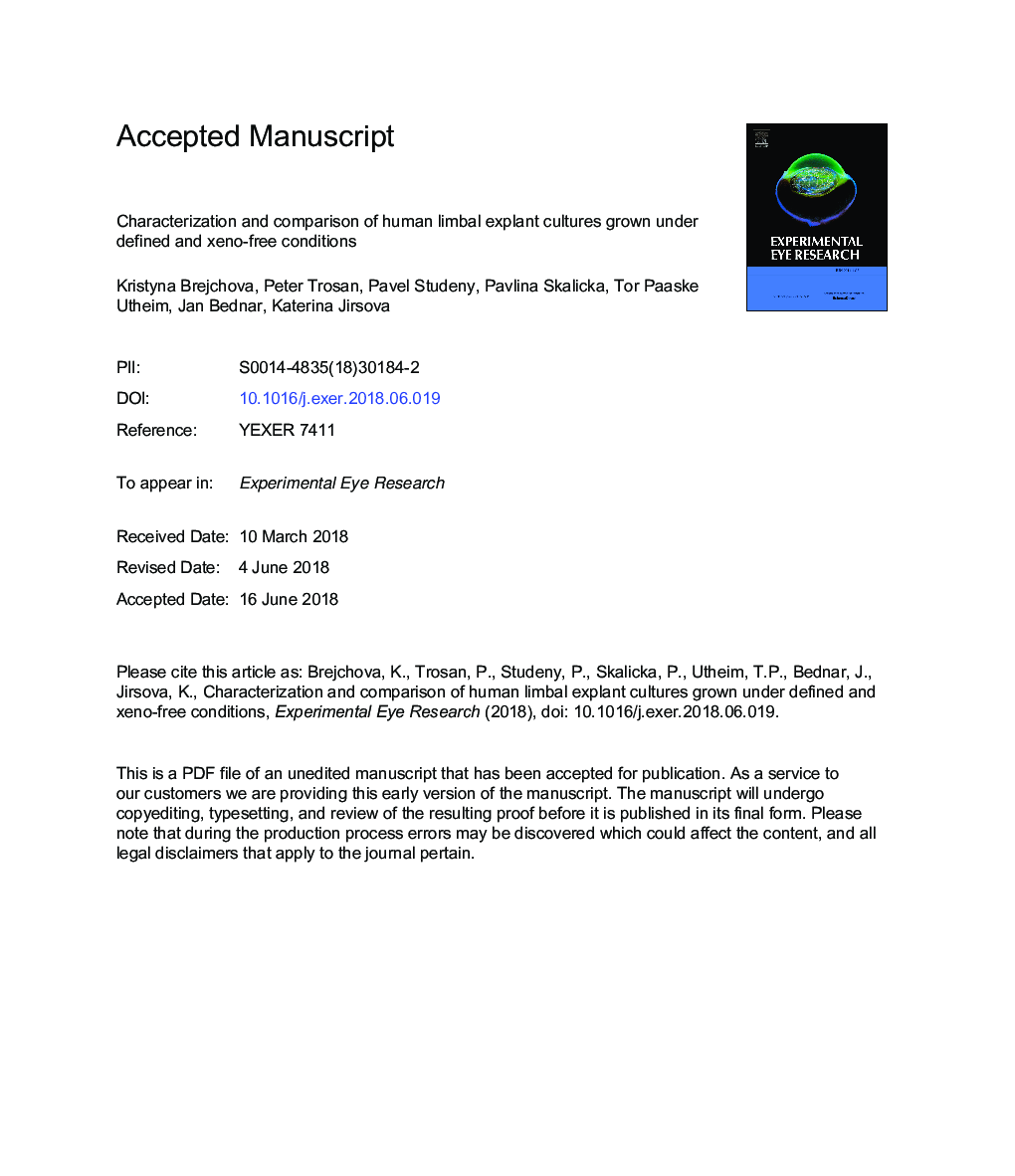| Article ID | Journal | Published Year | Pages | File Type |
|---|---|---|---|---|
| 8791871 | Experimental Eye Research | 2018 | 30 Pages |
Abstract
Human limbal epithelial cells (LECs) intended for treatment of limbal stem cell deficiency are commonly cultivated on a 3T3 feeder layer with complex culture medium supplemented with fetal bovine serum (FBS). However, FBS is a xenogeneic component containing poorly characterised constituents and exhibits quantitative and qualitative lot-to-lot variations. Human limbal explants were plated on untreated or fibrin coated plastic plates and cultured in two non-xenogeneic media (supplemented with either human serum or platelet lysate only). Our aim was to find out whether the characteristics of harvested LEC cultures are comparable to those of LEC cultivated in the gold standard - FBS-supplemented complex medium. The growth kinetics, cell proliferation, differentiation, stemness maintenance, apoptosis and contamination by other cell types were evaluated and compared among these conditions. In all of them LECs were successfully cultivated. Stemness was preserved in both xeno-free media. However, cells cultured with human serum on the fibrin-coated plates had the highest growth rate and cell proliferation and very low fibroblast-like cell contamination. These data suggest that xeno-free cell culture conditions can replace the traditional FBS-supplemented medium and thereby provide a safer protocol for ex vivo cultured limbal stem cell transplants.
Keywords
Related Topics
Life Sciences
Immunology and Microbiology
Immunology and Microbiology (General)
Authors
Kristyna Brejchova, Peter Trosan, Pavel Studeny, Pavlina Skalicka, Tor Paaske Utheim, Jan Bednar, Katerina Jirsova,
